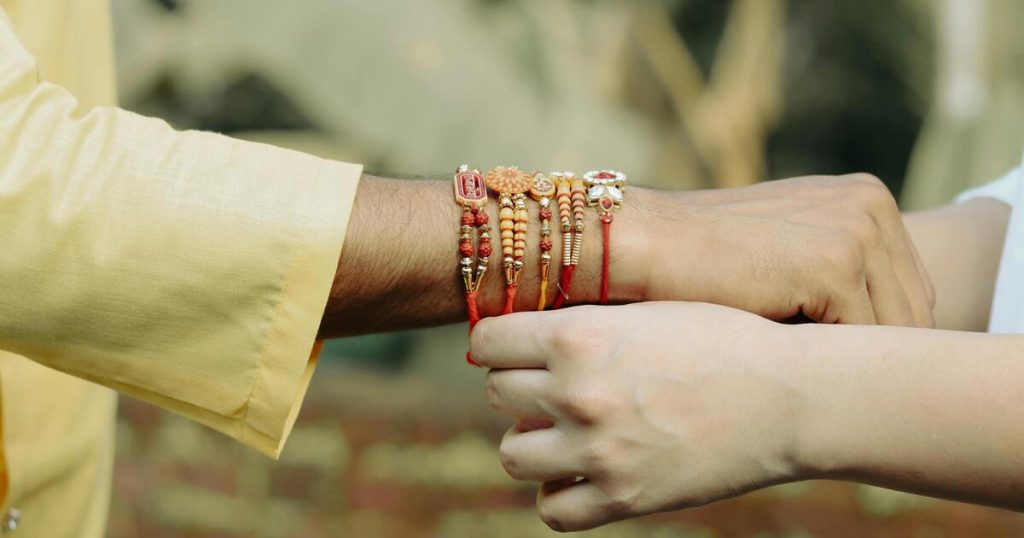Bracelets are more than just accessories; they’re statements of style and personality. However, finding the right fit can be challenging. Whether you’re shopping for yourself or choosing a gift for someone else, determining the AVERAGE BRACELET SIZE is crucial for comfort and aesthetics. In this guide, we’ll explore various methods to help you pinpoint the perfect bracelet size for any wrist.
Understanding Bracelet Sizing
Bracelet sizing lingo can be a tad tricky, but once you grasp it, you’ll never struggle to find the perfect fit again. Here’s a breakdown of the key terms and why they matter :
- Length : This refers to the total circumference of the bracelet when it’s laid out flat. It’s crucial because it determines whether the bracelet will fit comfortably around your wrist.
- Diameter : This is the distance across the widest part of the bracelet when it’s laying flat. It’s essential to know, especially if you have a broad wrist, as it helps ensure the bracelet won’t feel too snug.
- Size : Bracelet size typically indicates the length or circumference of the bracelet, usually measured in inches or centimeters. Knowing your wrist size is essential for choosing the right bracelet size to ensure it’s neither too loose nor too tight.
- Adjustable : Adjustable bracelets come with mechanisms like extension chains or sliding knots, allowing you to customize the fit. This flexibility is excellent if your wrist size varies or if you’re unsure about sizing.
- Clasp Type : Different bracelets come with various types of clasps, such as lobster clasps, toggle clasps, or magnetic closures. Understanding the clasp type is essential for both ease of wearing and ensuring a secure fit.
- Materials : The materials used in a bracelet can affect its size and fit. For example, stretchy bracelets made with elastic cords can accommodate a range of wrist sizes, while metal bracelets may require precise sizing to ensure a comfortable fit.
Understanding bracelet sizing terminology is essential for selecting the right bracelet for your wrist size and style preferences. Whether you prefer a snug fit or a looser feel, knowing these terms will empower you to find the perfect bracelet every time.

How to Measure Your Wrist
Sure, here’s a step-by-step guide on how to accurately measure your wrist for bracelet sizing :
Gather Your Tools : You’ll need a flexible measuring tape or a strip of paper and a ruler.
- Wrap the Measuring Tape : Place the measuring tape around your wrist where you typically wear bracelets. If you’re using a strip of paper, wrap it around your wrist snugly, but not too tight.
- Take the Measurement : Make sure the measuring tape or paper strip is level around your wrist. Note the point where the tape or paper meets, ensuring it’s neither too loose nor too tight.
- Record the Measurement : If you’re using a measuring tape, simply read the measurement where the tape meets. If you’re using a paper strip, mark the point where it meets with a pen, then measure the length with a ruler.
- Adjust for Comfort : If you prefer a looser or tighter fit for your bracelet, add or subtract a small amount from the measurement accordingly. Keep in mind the thickness of the bracelet you plan to wear.
- Repeat for Accuracy : For the most accurate measurement, repeat the process two or three times and take the average.
- Consult Sizing Charts : Once you have your wrist measurement, refer to sizing charts provided by bracelet manufacturers or sellers to determine your bracelet size. These charts typically correlate wrist measurements with corresponding bracelet sizes.
By following these steps, you’ll be able to accurately measure your wrist for bracelet sizing and ensure a comfortable fit for your wrist accessories.
Average Bracelet Sizes
Sure, here’s an overview of standard bracelet sizes and their suitability for different wrist measurements :
- Extra Small (XS) : Typically fits wrist sizes up to 5.5 inches (14 cm). Suitable for children or adults with very small wrists.
- Small (S) : Fits wrist sizes between 5.5 and 6 inches (14-15 cm). Ideal for petite adults or teenagers.
- Medium (M) : Fits wrist sizes between 6 and 7 inches (15-18 cm). This is the most common size for adults.
- Large (L) : Fits wrist sizes between 7 and 8 inches (18-20 cm). Suitable for individuals with larger wrists.
- Extra Large (XL) : Fits wrist sizes above 8 inches (20 cm). Designed for individuals with very large wrists.
Keep in mind that these are general guidelines, and bracelet sizing can vary depending on the style and design of the bracelet. It’s always best to measure your wrist circumference accurately before purchasing a bracelet to ensure the best fit.
Choosing the Right Fit
Selecting the perfect bracelet size involves a few key considerations to ensure a comfortable and stylish fit. Here are some factors to keep in mind :
- Wrist Measurement : Measure your wrist size accurately using a flexible tape measure or a piece of string. Wrap it around your wrist snugly, just below the wrist bone. Take note of the measurement in inches or centimeters.
- Comfort : A well-fitting bracelet should be snug enough to stay in place but not too tight that it restricts movement or feels uncomfortable. Ensure there’s some wiggle room for flexibility.
- Style and Preference : Consider the style of the bracelet and your personal preference. Some people prefer a looser fit for a more relaxed look, while others prefer a tighter fit for a sleeker appearance.
- Bracelet Type : Different types of bracelets may have different sizing requirements. For example, a bangle typically has a standard size and may need to slide over your hand, while a chain bracelet may have adjustable sizing options.
- Clasp or Closure : If the bracelet has a clasp or closure, ensure it’s easy to fasten and unfasten. Make sure the clasp is secure to prevent the bracelet from falling off accidentally.
- Width of the Bracelet : Consider the width of the bracelet. Thicker bracelets may require a slightly larger size to accommodate the extra width.
- Trial and Error : If possible, try on different sizes to see which one feels the most comfortable and looks the best on your wrist. Keep in mind that bracelet sizes can vary between brands and styles.
- Custom Sizing : Some jewelers offer custom sizing options to ensure the perfect fit. If you have difficulty finding the right size, consider opting for a custom-made bracelet.
By considering these factors, you can select the perfect bracelet size that not only fits comfortably but also complements your style and personality.
Customizing Bracelet Sizes
Custom-sized bracelets offer several advantages compared to standard-sized ones. Here are some options for customizing bracelet sizes and their benefits :
- Measurements tailored to fit : Custom-sized bracelets are crafted to fit the exact measurements of the wearer’s wrist. This ensures a comfortable and snug fit, preventing the bracelet from sliding around or feeling too tight.
- Personalized fit : With custom-sizing, individuals can specify their preferred fit, whether they prefer a looser or tighter bracelet. This level of customization ensures optimal comfort and wearability.
- Inclusive sizing : Custom-sized bracelets cater to individuals with smaller or larger wrist sizes that may not be accommodated by standard-sized bracelets. This inclusivity allows everyone to enjoy stylish accessories regardless of their wrist size.
- Enhanced style : A properly fitted bracelet enhances the overall aesthetic appeal of an outfit. Custom-sizing ensures that the bracelet sits elegantly on the wrist, complementing the wearer’s style and enhancing their overall look.
- Reduced risk of damage : Bracelets that are too loose are at risk of catching on objects and getting damaged or lost. Conversely, bracelets that are too tight can cause discomfort and restrict movement. Custom-sizing minimizes these risks by ensuring the bracelet fits securely without being too tight or too loose.
- Comfort and durability : By customizing the size, individuals can choose materials and designs that suit their preferences while ensuring maximum comfort and durability. This personalized approach allows for the selection of high-quality materials that withstand everyday wear and tear.
- Meaningful gift : Custom-sized bracelets make thoughtful and meaningful gifts, as they demonstrate careful consideration of the recipient’s preferences and ensure a perfect fit. Whether it’s for a birthday, anniversary, or other special occasion, a custom-sized bracelet reflects the thoughtfulness and attention to detail of the giver.
Overall, custom-sized bracelets offer a range of benefits, including personalized fit, enhanced style, inclusivity, comfort, and durability, making them a popular choice for individuals seeking unique and tailored accessories.

Tips for Comfortable Wear
Certainly! Here are some tips to ensure comfort and ease of wearing your bracelet throughout the day :
- Proper Fit : Ensure your bracelet is the right size for your wrist. It shouldn’t be too tight or too loose. If it’s too tight, it can be uncomfortable, and if it’s too loose, it might slide around too much.
- Choose the Right Material : Opt for materials that are comfortable against your skin. For example, if you have sensitive skin, avoid materials that may cause irritation like nickel or certain plastics. Instead, consider materials like stainless steel, sterling silver, or hypoallergenic options.
- Adjustable Designs : Look for bracelets with adjustable closures or designs that allow you to customize the fit. This way, you can adjust it throughout the day for maximum comfort.
- Consider Weight : Heavy bracelets can feel burdensome over time. If you prefer wearing heavier bracelets, try to limit the number of other accessories you wear on the same wrist to avoid discomfort.
- Smooth Edges : Ensure that any clasps, closures, or decorative elements on the bracelet have smooth edges to prevent them from digging into your skin or snagging on clothing.
- Regular Cleaning : Keep your bracelet clean to prevent any buildup of dirt or oils that can cause irritation. Use a soft cloth to wipe it down regularly.
- Rotate Bracelets : If you wear bracelets frequently, consider rotating them to give your skin a break from constant contact with the same material.
- Consider Your Activities : Certain activities or movements may affect the comfort of your bracelet. For example, if you type a lot, you might prefer a thinner bracelet that won’t interfere with your wrist movements.
- Stay Hydrated : Keeping yourself hydrated can prevent swelling, which can affect the fit and comfort of your bracelet.
- Listen to Your Body : If your bracelet starts to feel uncomfortable or irritates your skin, listen to your body and remove it if necessary. It’s important to prioritize your comfort and well-being.
By following these tips, you can ensure that wearing your bracelet remains a comfortable and enjoyable experience throughout the day.
Conclusion
The conclusion is that the AVERAGE BRACELET SIZE falls within a certain range, typically determined by measuring the wrists of a sample population and calculating the mean size. This average size serves as a guideline for bracelet manufacturers and retailers to produce products that fit a broad spectrum of customers.
